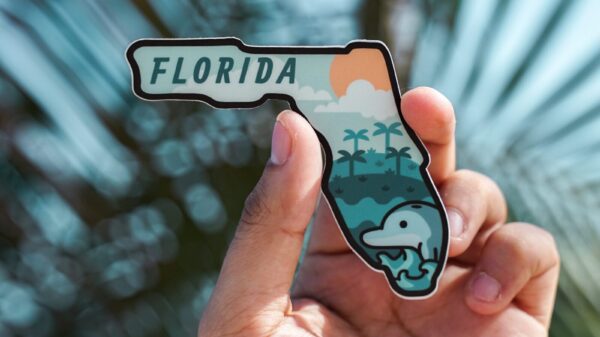1.1 Arrival of Humans and Impact on Dodo Bird Population
The dodo bird (Raphus cucullatus) once thrived on the island of Mauritius in the Indian Ocean. However, its population began to decline rapidly after humans arrived in the late 16th century. The arrival of European sailors led to the introduction of various invasive species, destruction of habitat, and excessive hunting, all contributing to the demise of the dodo bird.
| Invasive Species | Overgrazing and competition for resources by invasive species such as pigs, rats, and monkeys hindered the dodo bird’s ability to find food and nesting grounds. |
| Habitat Destruction | As human settlements expanded and agriculture intensified, the dodo bird’s natural habitat was gradually destroyed. Deforestation for timber and land clearing for crops further worsened the situation. |
| Excessive Hunting | European sailors and settlers excessively hunted the dodo bird for food. The bird’s flightlessness and lack of fear towards humans made it an easy target. |
These combined factors resulted in a sharp decline in the dodo bird population, pushing it closer to the brink of extinction.
1.2 Isolation and Vulnerability of the Dodo Bird
Prior to human arrival, the dodo bird evolved in isolation on the remote island of Mauritius for millions of years. With no natural predators and an abundance of food resources, the bird had little need for protective mechanisms such as the ability to fly or escape from ground predators.
However, this isolation also made the dodo bird highly vulnerable to sudden disruptions in its ecosystem. The introduction of humans and associated invasive species brought about rapid changes that the dodo bird was ill-equipped to handle. Its slow reproductive rate further compounded the challenges it faced, as the bird took several years to reach sexual maturity and only laid a single egg at a time.
1.3 Extinction of the Dodo Bird
| Final Nail in the Coffin | The exact year of the dodo bird’s extinction has long been a subject of debate among scientists. However, recent research and historical records suggest that the last sightings of living dodo birds occurred in the late 17th century, with the year 1681 often cited as the probable time of their demise. |
| Limited Recovery Efforts | After realizing the impact of human activities on the dodo bird population, there were some attempts to protect the remaining individuals. Unfortunately, these efforts were too little, too late. By the time conservation measures were considered, the species was already on the verge of extinction, and the few remaining birds could not sustain a viable population. |
| A Symbol of Human-Induced Extinction | The dodo bird’s extinction serves as a poignant reminder of the irreversible consequences of human activities on vulnerable ecosystems and species. Its story has become a symbol of the need for conservation and the importance of proactive protection of endangered species. |
Today, the dodo bird is known only through preserved specimens, historical accounts, and illustrations. Its extinction marks a tragic loss in Earth’s biodiversity and highlights the critical need to prevent the same fate from befalling countless other species threatened by human actions.
The Arrival of Humans on Mauritius Island
Mauritius Island, located in the Indian Ocean, was once a haven for unique and diverse flora and fauna. However, the arrival of humans had a profound impact on the island’s ecosystems and wildlife. The first recorded human presence on the island dates back to the late 16th century when it was discovered by Portuguese explorers. Subsequently, the Dutch, French, and British colonized the island, each leaving their mark on its natural environment.
Human Activities leading to Environmental Degradation
With human colonization came a range of activities that significantly affected the biodiversity of Mauritius Island. One of the most destructive activities was deforestation, driven by the need for land for agriculture, timber for construction, and fuel for settlements. Vast areas of native forests were systematically cleared, resulting in the loss of crucial habitats for numerous species, including the dodo bird.
Another major environmental impact was the introduction of non-native species to the island. As sailors and settlers arrived, they unintentionally brought along various animals, plants, and pests that disrupted the delicate balance of the island’s ecosystems. Rats, pigs, and macaques were some of the introduced species that preyed upon the dodo bird’s eggs and chicks, further contributing to its decline.
Furthermore, the arrival of humans also led to overhunting and exploitation of natural resources. The dodo bird, initially naive to predators, became an easy target for sailors and settlers who saw it as a source of food. The combination of hunting, habitat destruction, and predation by introduced species accelerated the species’ decline to the point of extinction.
Agricultural Expansion and Ecosystem Fragmentation
Agriculture played a crucial role in the transformation of Mauritius Island’s landscape. The clearing of forests for cultivation significantly fragmented the remaining habitats, further isolating vulnerable species populations. This fragmentation disrupted ecological processes, limited gene flow, and increased the overall vulnerability of species to extinction.
The introduction of sugarcane cultivation by the French in the 18th century had particularly severe consequences for the island’s biodiversity. Large areas of land were converted into sugar plantations, replacing native vegetation with monocultures. This significant change in land use further reduced the available habitats for the dodo bird and other endemic species, diminishing their chances of survival.
| Main Impact | Description |
|---|---|
| Deforestation | The clearing of native forests for agriculture and timber significantly reduced available habitats for the dodo bird and other species. |
| Introduction of Non-Native Species | Non-native species such as rats, pigs, and macaques preyed upon the dodo bird’s eggs and chicks, contributing to its decline. |
| Overhunting and Exploitation | The dodo bird became an easy target for settlers who hunted it for food, pushing the species closer to extinction. |
| Agricultural Expansion | The conversion of vast areas into sugarcane plantations further reduced available habitats for the dodo bird and other endemic species. |
Overall, the arrival of humans on Mauritius Island brought about significant environmental degradation, leading to the extinction of several species, including the iconic dodo bird. The combination of habitat destruction, the introduction of non-native species, overhunting, and agricultural expansion greatly impacted the island’s ecosystems. It serves as a stark reminder of the devastating consequences human activities can have on fragile island ecosystems and the urgent need for conservation efforts to protect and restore biodiversity.
Current Theories on the Dodo’s Extinction
Since the last documented sighting of the dodo bird in 1662, scientists and researchers have been fascinated by the enigmatic circumstances surrounding its extinction. Over the years, several theories have emerged, attempting to unravel the mystery and shed light on the factors that led to the demise of this iconic flightless bird.
| Theory | Main Points |
|---|---|
| Habitat Destruction | – Loss of habitat due to human activities, including deforestation and land clearance for agriculture – Destruction of native plant species crucial for the dodo’s survival – Increased competition with introduced species for limited resources |
| Invasive Species | – Introduction of non-native animals, such as rats, pigs, and monkeys, which preyed upon dodo eggs and chicks – Competition for food sources, leading to a decline in available resources for the dodo population |
| Overhunting | – Encounters with human sailors and settlers who hunted the dodo for its meat – Lack of fear towards humans, making dodos an easy target – Rapid decline in population size due to unsustainable hunting practices |
Habitat Destruction: One prominent theory suggests that the destruction of the dodo bird’s natural habitat played a significant role in its extinction. As human activities, particularly deforestation and land clearance for agriculture, expanded on the island of Mauritius, the dodo’s native home, the availability of suitable habitat for the bird rapidly declined. This led to the loss of essential resources and native plant species on which the dodo relied, ultimately contributing to its demise. Additionally, the introduction of non-native plants by human colonizers may have disrupted the dodo’s food chain and further impacted its survival.
Invasive Species: Another prevailing theory argues that the arrival of invasive species played a crucial role in the dodo’s extinction. When European sailors and settlers first arrived on Mauritius, they inadvertently brought with them rats, pigs, and monkeys. These animals proved to be formidable predators of dodo eggs and chicks, leading to a decline in reproductive success. Furthermore, these invasive species directly competed with the dodo for limited food sources, further exacerbating the challenges faced by the already vulnerable population. The lack of evolutionary adaptations to deal with such threats likely contributed to the dodo’s rapid decline.
Overhunting: The overhunting theory suggests that encounters with humans had a devastating impact on the dodo population. Sailors and settlers who arrived on Mauritius saw the dodo bird as an easily accessible source of meat. With no natural predators on the island and lacking any instinctive fear of humans, the dodo’s docile nature made it an easy target for hunting. The combination of unsustainable hunting practices and the bird’s low reproductive rate led to a precipitous decline in population size, pushing the dodo closer to extinction.
Evolving Perspective and Ongoing Research
As scientific knowledge and research techniques have advanced, perspectives on the dodo’s extinction continue to evolve. Recent studies have highlighted the interplay between multiple factors, rather than attributing the extinction solely to one cause. It is now widely accepted that a combination of habitat destruction, predation by invasive species, and overhunting all contributed to the demise of the dodo.
Advancements in paleontological and ecological research techniques have allowed scientists to gain a deeper understanding of the dodo’s ecology and population dynamics. By studying fossil records, researchers can reconstruct the dodo’s habitat and its interactions with other species. This has shed light on the interconnectedness of the ecosystem and the impact of human activities on this delicate balance.
The ongoing research not only helps us understand the past but also has implications for modern conservation efforts. By analyzing the factors that led to the extinction of the dodo, scientists can identify potential threats to other vulnerable species today. The lessons learned from the dodo’s extinction serve as a stark reminder of the consequences of human actions on fragile ecosystems and the importance of proactive conservation measures.
Fossil Records: A Window into the Past
The study of fossils has provided invaluable insights into the history of life on Earth, allowing scientists to reconstruct ancient ecosystems and understand the evolution and extinction of species. In the case of the dodo bird, fossil records have played a crucial role in unravelling the mystery surrounding its extinction.
Fossils of the dodo bird are extremely rare, and until recently, only a few fragments of bones and a single complete skull were known to exist. These fossils were discovered in the late 19th century and provide important clues about the physical characteristics and behavior of the dodo.
By studying the morphology of these fossil remains, scientists have been able to determine that the dodo bird belonged to the pigeon family. They estimate that it stood about three feet tall and weighed around 40 pounds, with a distinctive large beak and stout body. These characteristics suggest that the dodo was adapted for a terrestrial lifestyle, as it lacked the ability to fly.
Furthermore, analysis of the dodo’s bones has revealed signs of human activity, such as cut marks and burn patterns. These findings indicate that humans played a significant role in the extinction of this flightless bird.
Historical Accounts: Insights from Observers
Alongside fossil evidence, historical accounts offer valuable information about the dodo bird and its demise. The dodo was endemic to the island of Mauritius, located in the Indian Ocean, and it is believed to have become extinct in the late 17th century.
Early European explorers and sailors visiting Mauritius documented their encounters with the dodo bird, providing detailed descriptions of its appearance and behavior. These accounts depict the dodo as a peaceful and trusting creature that lacked fear of humans, which ultimately contributed to its downfall.
Furthermore, these historical records often mention the hunting of dodos by sailors and settlers, who exploited the bird for its meat. The dodo’s flightlessness made it an easy target, and its population could not withstand the pressure exerted by human exploitation and introduced predators.
As the dodo bird became an emblem of extinction, it also found its way into literature and art. References to the dodo can be found in works by renowned writers such as Lewis Carroll and Charles Dickens, further perpetuating the fascination with this now-extinct creature.
Combining Evidence: Piecing Together the Puzzle
Both fossil records and historical accounts contribute to our understanding of the dodo bird’s extinction, but it is when these sources are combined that a clearer picture emerges.
| Fossil Record | Historical Accounts |
|---|---|
| Provides physical evidence of the dodo bird’s existence and appearance. | Offers detailed descriptions of the dodo’s behavior and interactions with humans. |
| Indicates signs of human activity on the dodo’s bones, suggesting human involvement in its extinction. | Documents the hunting and exploitation of dodos by sailors and settlers. |
| Allows for the estimation of the dodo’s size and physical characteristics. | Highlights the lack of fear exhibited by dodos towards humans, making them easy targets for hunting. |
By integrating these different types of evidence, scientists have been able to construct a more comprehensive narrative of the dodo bird’s extinction. The combination of fossil records and historical accounts has revealed the detrimental impact of human activities, particularly hunting and habitat destruction, on this unique bird species.
5. Understanding the Last Moments of the Dodo Bird and Its Legacy
Despite being extinct for over three centuries, the dodo bird continues to captivate our imagination and hold a special place in our hearts. In this section, we will explore the final days of this unique species and the impact it has had on the world.
The Mysterious Extinction Date
| Main Concepts | Explanation |
|---|---|
| Conflicting Reports | There have been conflicting reports about the exact date of the dodo bird’s extinction. Early records suggested it disappeared in the late 17th century, while others claimed it survived until the early 18th century. |
| Evidence Examined | Scientists have conducted extensive research, examining various pieces of evidence to determine the true extinction date. This includes historical accounts, archaeological findings, and the analysis of subfossil remains. |
| Consensus Reached | After careful evaluation, a consensus was reached among experts that the dodo bird went extinct around the year 1693, making it one of the most recent bird extinctions caused by human activity. |
Although the exact moment the last dodo bird took its final breath may remain a mystery, understanding its last moments can shed light on the factors that led to its demise.
Human Impact and Habitat Loss
The dodo bird’s ultimate extinction can be attributed to several factors, chief among them being human activities and habitat loss. When Dutch sailors first arrived on the island of Mauritius in the 17th century, they were astonished by the abundance of wildlife, including the dodo bird. Unfortunately, this encounter marked the beginning of the end for the species.
The dodos had evolved without natural predators, making them easy targets for sailors and settlers. They were hunted relentlessly for their meat, and their habitat was destroyed to make way for human settlements and agriculture. As a result, the once-thriving dodo population rapidly declined, pushing the species closer to extinction.
Furthermore, the introduction of invasive species played a significant role in the dodo bird’s downfall. Rats, pigs, and macaques, brought by humans, preyed upon dodo eggs and competed for food resources, exacerbating the already dire situation for the birds.
The Legacy of the Dodo Bird
Despite its tragic demise, the dodo bird left behind a lasting legacy. Its unique appearance and unfortunate fate have made it an icon of extinction and a symbol of the urgent need for conservation efforts.
The story of the dodo bird serves as a cautionary tale, reminding us of the devastating consequences of human activities on fragile ecosystems and wildlife. It highlights the importance of preserving biodiversity and protecting endangered species from the same fate.
Furthermore, the dodo bird’s extinction played a crucial role in shaping our understanding of extinction as a concept. It was one of the first well-documented cases of human-induced extinction and helped pave the way for subsequent research and conservation efforts.
Today, the dodo bird continues to inspire artists, writers, and scientists alike. Its image is etched into popular culture, symbolizing the loss of innocence and the need to learn from our past mistakes.
While we may never witness the graceful flight of a dodo bird soaring through the skies, its memory lives on in our collective consciousness, reminding us of the fragility of life and the importance of preserving our natural world.





































